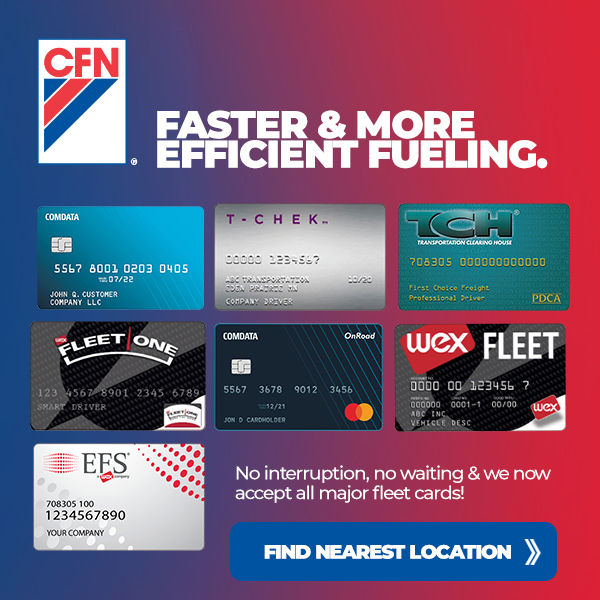
By Ed Pierce, Fleet Industry Editorial & Marketing Consultant
January 31, 2024
Fleet services companies face stiff competition in creating brand awareness and driving sales leads. To meet this objective, marketing managers need to determine a proper marketing mix in their marketing plan. In this blog we’ll cover key steps and strategies for crafting the ideal mix which not only increases brand recognition but also generates sales leads in this competitive field.
An Understanding of the Fleet Services Industry
Before diving deep into creating a marketing mix for fleet services businesses, it’s imperative that one has an in-depth knowledge of this sector. Fleet services cover an expansive variety of businesses, including vehicle maintenance and repair, fuel management, telematics services and more. These enterprises target logistic companies, transportation providers, government agencies, as well as businesses with vehicle fleets as their target audience.
 An effective marketing mix requires an understanding of industry challenges, trends and pain points – these insights serve as the cornerstone for developing tailored strategies which resonate with their target audiences.
An effective marketing mix requires an understanding of industry challenges, trends and pain points – these insights serve as the cornerstone for developing tailored strategies which resonate with their target audiences.
Determining Your Marketing Objectives
As part of creating an effective marketing mix for fleet services companies, the initial step should be setting clear and measurable objectives. Examples might include:
- Enhancing Brand Awareness: Raise awareness within an industry or among potential clients for brand.
- Generating Sales Leads: Attract qualified leads interested in your services.
- Establishing Thought Leadership: Establish your company as an industry expert.
- Improving Customer Retention: Encourage existing clients to remain loyal customers of your services – vital in terms of increasing retention.
- Expanding Market Share: Accumulate more of the market.
 Each objective demands its own approach within the marketing mix. For instance, to increase brand recognition, you could leverage content marketing and social media. Conversely, to generate sales leads it may require attending industry events in large numbers.
Each objective demands its own approach within the marketing mix. For instance, to increase brand recognition, you could leverage content marketing and social media. Conversely, to generate sales leads it may require attending industry events in large numbers.
Target Audience Segmentation Solutions Available Now
Marketing managers in the fleet services industry face unique challenges to effectively segment target audiences for marketing activities and tailor their mix accordingly. Segmentation may depend on industry type, fleet size, geographic location or specific challenges facing particular target segments.
Logistics companies might prioritize cost-cutting solutions, while government agencies might prioritize compliance and reporting needs. Tailoring your marketing mix accordingly to address their unique requirements can help ensure its success.
Crafting an Effective Marketing Mix
Armed with an understanding of your industry and objectives, it’s time to craft the perfect marketing mix. A standard Four-P mix consists of Products, Prices, Place and Promotion; in fleet services this may also include People and Processes as additional components of this broader plan. Here’s how you can put it all together:
Product/Service Offering: Your fleet services should form the cornerstone of your marketing mix. Focus on their unique features, benefits and value propositions while making sure they align with the needs of target audience segments.
Price Strategy: Pricing strategies in fleet services can make or break an organization. Deliberate whether your pricing structure should prioritize competitive or value-based models and offer flexible payment solutions tailored to different client budgets. Be transparent and offer transparent options so customers are fully informed.
Place (Distribution): When planning the distribution of fleet services to specific audiences, take care to consider where and how your services can reach them. In the fleet services industry this may include physical locations (e.g., service centers) online platforms or even partnerships with industry-specific software or hardware providers.
Promotion: Promotion is part of your overall marketing and advertising plan to build brand recognition and drive new leads.
 Content Marketing: Create informative and useful content that addresses the pain points and challenges of your target audience. Blogs, whitepapers, webinars and case studies can all serve to showcase your expertise effectively.
Content Marketing: Create informative and useful content that addresses the pain points and challenges of your target audience. Blogs, whitepapers, webinars and case studies can all serve to showcase your expertise effectively.
Digital Marketing: When engaging in digital marketing, take advantage of online channels, such as SEO, email marketing and social media advertising, to reach potential clients. Implementation of an attractive website featuring user-friendly navigation elements is vitally important to online presence.
Event Marketing: Join industry-related trade shows, webinars and conferences to network, demonstrate your services and connect with potential leads.
Networking: Build relationships with industry peers, customers and partners through networking events and collaborative efforts; word-of-mouth referrals are powerful in the fleet services sector.
Public Relations: Create and sustain an excellent public image using media relations, press releases and crisis management strategies.
People: Your team members play an instrumental role in providing quality fleet services, so make sure that each employee has been adequately trained, is customer service focused and aligns with your company values and mission statement.
Processes: Optimize internal processes to guarantee efficient service delivery. A well-oiled operation enhances customer satisfaction, creating brand recognition and increasing lead generation.
Measuring and Analyzing Results
Once your marketing mix is operational, it’s essential to measure and analyze results in order to optimize strategies and meet objectives. Key metrics you should keep an eye on:
- Website Traffic and Conversion Rates: Keep tabs on both visitor numbers to your website, as well as how many are taking desired actions, like filling out contact forms or requesting quotes.
- Lead Generation: Keep track of how many leads have been generated through different marketing channels, such as email inquiries, event registrations and direct contact forms.
- Brand Awareness: Use tools such as social media engagement metrics, website traffic analytics and surveys to measure the effects of your brand awareness efforts.
- Customer Acquisition Cost (CAC): Calculating Customer Acquisition Cost helps allocate resources more effectively.
- Customer Lifetime Value (CLV): Determine the long-term worth of each customer to your business; an increase in CLV justifies increased marketing expenditures.
- Conversion Rates: Evaluate the effectiveness of your lead generation efforts by tracking how many leads convert into paying customers.
- Customer Retention: Evaluate customer retention rates to gauge your efforts at keeping existing clients.
- Calculate Return On Investment (ROI) for Each Marketing Channel: To allocate resources toward cost-effective strategies, you’ll want to calculate ROI for every marketing channel in which resources will be deployed.
Conclusion
Crafting an ideal marketing mix for fleet services companies involves an in-depth knowledge of industry dynamics, clearly stated objectives and effective segmentation practices, along with taking an integrated approach to Product, Price, Placement and Promotion strategies. Regular measurement and evaluation ensure your efforts are effectively driving brand recognition and driving sales leads forward.
 An effective marketing mix in fleet services can make all of the difference for brand recognition and growth in an ever-evolving industry such as this one. Stay current on industry trends while actively listening to customer feedback in order to optimize it further for maximum impact.
An effective marketing mix in fleet services can make all of the difference for brand recognition and growth in an ever-evolving industry such as this one. Stay current on industry trends while actively listening to customer feedback in order to optimize it further for maximum impact.
To learn more about how to craft an effective fleet service marketing mix, simply contact Ed Pierce at Fleet Management Weekly’s Brand Acceleration team. No-cost, no obligation. Reach him at 484-957-1246, or [email protected].




